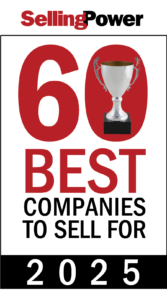Size Matters
Many sales organizations are undergoing a change in size right now. Either they’re shedding salespeople with the goal of cutting costs in this turbulent market or they’re adding head count, aiming to snap up some of the talent on the street and boost sales. The question isn’t whether you’re shrinking or growing, however; it’s whether you’re making your sizing decision based on science rather than on a knee-jerk reaction to the markets. In their new book, Building a Winning Sales Force (AMACOM, 2009), ZS Associates cofounders Adris Zoltners and Prabhakant Sinha, together with business writer Sally Lorimer, walk you through a quick, five-test assessment you can do to decide whether your sales force is too big, too small, or just right. Here’s a look at each of the five tests:
Test #1: Customer Test. Customer reactions provide an indicator of sales force sizing. If customers say things like, "I can’t reach my salesperson when I need him," "I don’t know who my salesperson is," or "I can’t recall seeing my salesperson in a long time," your sales force may be too small. On the other hand, if customer reactions sound more like, "My salesperson is a pest," or "I prefer to get what I need through the company’s Web site," it may mean your force is too big. Don’t know what customers are saying? Consider using surveys as a way to assess the size of your sales force.
Test #2: Sales Force Morale Test. Sales force morale often can be linked to the size of the force. Zoltners, Sinha, and Lorimer tell the story of a company at which 28 reps covered the entire United States. Some reps had territories covering several large states; as a result, they were rarely at home. Morale suffered and turnover reached 40 percent annually. If your salespeople complain about being overworked, having to travel too much, or not having the time to explore customer needs, your force may be too small. If they tell you they don’t have enough customers to make good money in their territories or they are no longer stimulated by their work, your force may be too big.
Test #3: Selling Activities Test. Use sales force surveys, call reporting data, and observations to study how your reps are spending their time. If your force is too small, you’ll likely see salespeople struggling just to keep up with basic tasks such as order taking, failing to probe customers because they don’t have time, and spending too little time on crucial activities like prospecting for new customers and building relationships with important customers. If your force is too large, salespeople will be spending too much time on noncritical activities like paperwork and meetings, too much time on activities that should be performed by others such as handling customer service problems, and too much time with small, low-potential customers.
Test #4: Competitive Position Test. This test requires you to compare your company’s investment in its sales force with that of your competitors. If your competitors are downsizing, you might be able to get away with it as well without losing market share. You can also maintain (or strengthen) your competitive position by maintaining or increasing your "share of voice," say the authors. Compare the number of offices and salespeople that major competitors in your region have and you’ll get a sense of where you rank competitively.
Test #5: Financial Test. Break out your calculators! Zoltners, Sinha, and Lorimer delve into a seven-step break-even analysis that is explained in detail in their book. In short, it includes (1) estimating the annual cost of a salesperson, (2) estimating the gross contribution margin rate, (3) calculating break-even sales, (4) estimating the incremental sales that an additional salesperson could generate in a year, (5) dividing incremental annual sales per additional salesperson by break-even sales to get the break-even ratio, (6) estimating the percentage of this year’s sales that will be maintained next year without any sales force effort, and (7) using a table to find out what the break-even ratio and the carry over rate imply about your sales force size. Typically, if ROI is less than 50 percent, your force is too large; if it’s more than 150 percent, the force is too small.
When you compile and summarize your results, you may well find these tests produce conflicting results with two or three tests indicating a need to grow the force and the remainder suggesting the force is right sized or should be reduced. Such a result is not unusual. "A synthesis of all the tests is required in order to make a final sales force sizing assessment," say the authors. Once you complete that assessment, you can move forward with a sizing decision, confident you are moving in the right direction.
For more information, visit www.zsassociates.com.
Get our eNewsletter
Get the latest sales leadership insight, strategies, and best practices delivered weekly to your inbox.
Sign up NOW →